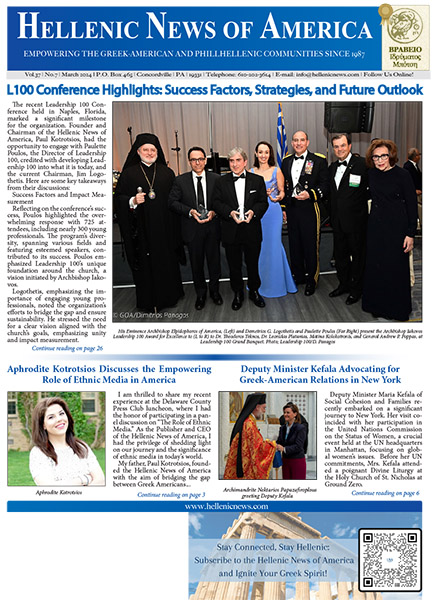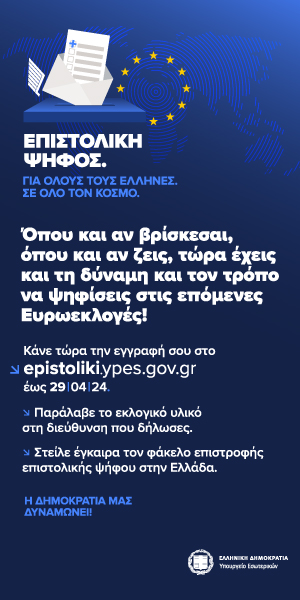“The two most important days in your life are the day you are born and the day you find out why.”
Mark Twain
“But what do you do with the rest of your time?” inquired the prying visitor. “I sleep late, fish a little, play with my children, take siestas, and stroll into the village each evening with my wife where I sip wine and play guitar with my amigos. I have a full and meaningful life!”
“I can help you be more successful,” the banker scoffed. “You should spend more time fishing. With the larger proceeds, you could buy a bigger boat. With the earnings from the bigger boat you could buy several boats. Eventually you would have a fleet of fishing boats. Instead of selling your catch to a middleman you would eventually open your own cannery. You would control the product, processing and distribution. You would need to leave this small coastal fishing village and move to Mexico City, then Los Angeles and eventually New York where you will run your ever-expanding enterprise.”
“But then what?” asked the fisherman. “That’s the best part,” responded the satisfied American. “When the time is right, I will help you sell your company and become very rich. You will make millions!”
“Millions? . . . Then what?” continued the curious Mexican. “Why . . . then you will retire,” insisted the banker. “You will move to a small coastal fishing village where you will sleep late, fish a little, play with your children, take siestas, and stroll to the village in the evenings with your wife, where you will sip wine and play guitar with your amigos. I assure you,” promised the American, “if you follow my advice – you will have a full and meaningful life!”
An existential task of every individual is finding the meaning of life. Failure to complete the assignment renders life vain and futile. Tragically, society’s emphasis on unbridled individualism has replaced the valuations that can provide life a sense of intrinsic self-cohesion. As a consequence, many are unfulfilled and depressed. Their past was disappointing, the present empty, and the future futile. For such individuals, life is a maddening quest for professional advancement, notoriety and personal gratification. Unfortunately, like the advice proffered by the vacationing banker, the promise of fulfillment is self-defeating.
The Akathist Hymn, a 6th century Christian poem dedicated to the virtues of Mary, the Holy Mother of Jesus, provides individuals of all ages an annual opportunity to reflect on spiritual valuations that provide a starting point for discovering life’s true meaning and purpose. Examined from the perspective of leadership, the Canticle’s 24-stanzas provide a valuable four-part paradigm for the discovery and use of executive voice: (a) vocation, (b) validation, (c) valuation, and (d) veneration. In this third of four distinct commentaries on the general theme, Frankly Speaking will specifically focus on the topic of vocational valuation.
A 2008 Gallup Study of 84 countries indicates that, unlike their agnostic counterparts, faith-based respondents were more than twice as likely to say that their lives “have an important meaning or purpose.” Similar findings, published by the Association for Psychological Science (APS) in 2013, suggest that as a result of “greater religious” or “spiritual engagement,” poorer countries indicate higher levels of “life satisfaction and meaning” than in more affluent nations. Unlike the third-world, a 2014 Barna Research Group study indicates that three-quarters of U.S. adults (75%) are “looking for ways to live a more meaningful life.” Unfortunately, only 40% of these respondents say they have a “clear sense of God’s calling in their lives.” More troubling, while forty eight percent (48%) of Millennials say that they believe “God is calling them to seek a different vocation,” they have not yet made such a change.
Like Gallup, APS, and the Barna Research Group, data published in the Spirituality in Higher Education: A National Study of College Students’ Search for Meaning and Purpose (UCLA – 2003), indicates that seventy five percent (75%) of college students have very high levels of spiritual interest. Respondents indicated that they are searching for deeper meaning in their lives, by looking for ways to: (a) cultivate their inner selves, (b) be compassionate and charitable, and (c) determine what they think and feel about the many difficult issues currently confronting society. Regrettably, while most were actively engaged in a spiritual quest to determine the “meaning and purpose of life,” only thirty four percent (34%) of America’s college students reported, that their “health was psychologically positive.”
According to the Akathist Hymn, the Incarnation is the key to discovering the purpose and meaning of life. By opening the multifaceted construct of self-acceptance, vocation, service, vulnerability, and attitudes towards death, the ancient Canticle presents its most vital missive. Life’s meaning and purpose can only be discovered when values are defined and self-limitations are overcome through an ever-deepening relationship with Christ, the Incarnate Shepherd and Savior.
In the first installment of Finding Your Voice, the 1stSection (Stanzas 1-6) of the Akathist Hymn was used to focus on the Holy Mother’s acceptance of the Holy Spirit’s vocare. As observed in the subsequent commentary, the 2nd Section (Stanzas 7-12) of the ancient Canticle poetically illustrated how the Virgin’s vocational acquiescence was validated by authentically epitomizing the incarnational presence of God. This was accomplished when the Almighty demonstrated His abiding love for humanity by becoming human through the free will choosing of a virgin mother.
Once validated, vocation should be valuated. While humanity’s ultimate appraiser is God Himself, the impact of an individual’s vocational efforts should undergo honest periodic assessments. Unlike the Mexican fisherman, however, external ideologies should not be allowed to highjack the process of personal valuation. On the contrary, the effects of an authentic leader’s vocational motivations and life choices should only be estimated on the scale of intrinsic values and authentic principles.
The 3rd Section (Stanzas 13-18) of the Akathist Hymn focuses on the doctrine of the Incarnation, and poses critical questions concerning its meaning, purpose, and impact. The doctrine of the Incarnation, the belief that the Savior of the world, both divine and human, entered His creation through a virginal birth, is the central truth that sets Christianity apart from all other religions of the world (including Judaism and Islam). The famed author, C. S. Lewis aptly insists, that the reason why the Son of God became a man was “to enable humanity to become sons of God.” The Akathist Hymn firmly concedes this purpose, stating that the Most High appeared on earth to “call humanity unto Himself.” The Incarnation’s primary intension was to “forgive,” “call,” and “draw humanity on High.”
The following briefly outlines the Incarnational concerns of the Akathist Hymn’s 3rd Section, each with their respective valuations.
- The new Creation, wrought by the Incarnate Lord through the Theotokos.
- The call for the uplifting of humanity’s mind to Heaven, from where God descended.
- The Lord’s Omnipresence, simultaneously present on earth and Heaven.
- The Incarnation’s impact on philosophers, fishermen, and seafarers.
A valuation may refer to a broad variety of events or circumstances. Apart from past and present experiences, valuations are the products of self-reflections that receive their meaning from anticipations of future events. On the theoretical level, valuation is a motivational theory of personhood that provides a conceptual framework for the dialogical study of the self as an organized process. On the methodological level, valuation encourages self-investigation of an individual’s “multi-voiced-ness.”
Created in the image and likeness of God, and examined according to the Christian doctrine of the Trinity, the “self” may be understood as communal, multi-voiced, and dialogical in nature. In his book, Exclusion & Embrace: A Theological Exploration of Identity, Otherness, and Reconciliation (1996), Miroslav Volf defines the Trinity as “distinct persons, internally constituted by the indwelling of other persons in them. The personal identity of each,” writes Volf, “is unthinkable without the presence of others in each.” As such, a Trinitarian theology of self-construction involves the notion of “the presence of the other in the self” (Volf).
Functioning as a “community of identities”, the self is populated by a multiplicity of “self-positions” that have the possibility to entertain dialogical relationships with each other. The Akathist Hymn in general, and the 3rd Section in particular, invites worshipers to enter into honest dialogues with their multi-voiced self. Valuations are, thereby, elicited by the Hymn’s lyric “voice” that guides worshipers through a series of conversations with valuable implications concerning their respective life situations.
The Akathist Hymn advocates that, as the story of God’s self-giving love, the Incarnation provides the contextual space through which healthy valuations can occur. Whether it involves opening space for the other, contemplating one’s own story, voicing conflicted aspects of self, or establishing new self-constructions, self-reflection is a significant leitmotif of the ancient Canticle’s verses.
The Self Confrontation Method (SCM) is a means of self-investigation rooted in Hubert Hermans’ Valuation Theory. It is a viable procedure used by therapists for contextualizing problems, assessing self-schemas, identifying emotional patterning, and facilitating healthy change and development in their clients. SCM can be used in group, or private study settings, as a practical framework for assessing an individual’s valuations at a particular point in time, and to thereby, determine how those estimations relate to one’s feelings about self and others.
Three general phases are associated with the administration of the Self Confrontation Method: (a) identification, (b) assessment, and (c) and integration of valuations. While the process is typically guided by a skilled therapist, the Akathist Hymn may be employed to produce similar “conversations” by using its scripturally-themed lyric verses to encourage worshipers to reflect on their past, present, and future valuations of self. When fashioned, narrative answers from these inner-dialogues could then be used to identify valuations that either define or require the refinement of vocational meaning.
The Akathist Hymn uses the “voice” of numerous scriptural dispositions and symbols to stimulate self-dialogue within and among worshipers. Christian symbols, and their related derivations, were first mentioned in the writings of Clement of Alexandria (153-217 AD). “Let our signets be either a dove, a fish, or a ship scudding before the wind,” suggested the 2nd Century Theologian. “Let the musical lyre, or a ship’s anchor be our hallmark.”
Like Clement, the 3rd Section of Hymn describes three classifications of “self,” each with their respective valuations: (a) Athenians (intellectuals), (b) fishermen (laborers), and (c) sailors (explorers). The following Matrix utilizes the Self-Confrontation Method to help individuals investigate their current valuation system based on the multi-verse stanzas of the Akathist Hymn’s 3rd Section. While a balanced synthesis (mental, physical, spiritual) would be ideal, an honest self-valuation will disclose that most participants will either favor one or rank-order the three dispositions.
Athenians
Athenians are mentioned for the first time in the Bible in the 17th Chapter of the Book of Acts. Home to the philosophical schools of Socrates, Plato, and Aristotle, Athens was a city of proud intellectuals that argued, discussed, and openly debated politics and religion. Crowded with cognoscentes, the Athenians craved novelty and obsessed the spiritual. In fact, with a population of 10,000 inhabitants, the city also enclosed more than 30,000 idols. Consequently, it was said that in Athens it was easier to find a god than a man.
Standing in the midst of the “very religious” judicial council at the Areopagus, Saint Paul invited these “learned men of Athens,” to re-valuate their existing philosophical frameworks. Through a series of self-confrontational questions, he challenged the Athenians to modify their arbitrary mental models in light of the Absolute Truth of the Incarnate God (Acts 17:21-22). As a result, “while many sneered . . . some Athenians believed and became followers of Paul” (Acts 17:33).
Fishermen
Athenians were characterized by their fluctuating elitist intellectual priorities. Fishermen, on the other hand, were the working class laborers of the 1stCentury. Although the Bible identified the majority of Old Testament leaders as shepherds (Abraham, Isaac, Jacob, Moses), fishermen were nonetheless, the rugged individuals that Jesus selected to be the elders of His New Covenant (Matthew 4:18, 19). Peter was originally a fisherman prior to his vocational call to become a shepherd. However, while God appointed specific individuals to be the primary shepherds of His Sheepfold, it can be argued that the entire Church is called to cast the nets of evangelism. “I will send for many fishermen,” declares the Lord (Jeremiah 16:16). “They will stand along the shore,” writes Ezekiel, “and like the sand of the Great Sea, my fishermen catch many kinds fish” (47:10).
Numerous scriptural narratives can be cited to highlight how the valuations of the fisherman delightfully describe and effectively advance the evangelical message of the Gospel. As an example, Jesus once compared His Kingdom to a fisherman’s net. “Let down the net into the lake, He promised, “and you will catch a variety of fish” (Matthew 13:47-48). This and other fishing motifs were so persuasive that the Greek letters of the word for fish were selected to form an acrostic for Jesus’ Incarnation identity (Jesus Christ, Son of God, Savior). Finally, two additional incidents describe how Jesus instructed fishermen to re-cast their nets, even though they’d been fishing all night with no catch. One occurs at the beginning of Jesus’ ministry, the other at the end. Both accounts are followed by Christ’s words, “From now on you will be fishers of men” (Luke 5:10).
Seafarers
Like the “wisdom” of the philosopher, and the “net” of the fisherman, the “ship” of the sailor became a popular theological symbol for the early Christian “seafarer” and “pioneer.” In fact, Tertullian, the prolific early Christian author, was first to compare the imagery of the ship to the ark constructed by Noah to save his family from the Flood (1 Peter 3:20-21). Similarly, the image of Peter’s ship on the stormy Sea of Galilee (Mark 4:35-41) was used to symbolize the Ark of the new Covenant, whose mast depicted the power of the Cross.
Finally, in an illustration for Psalm 69 from the Belleville Breviary, Saint Peter is depicted lying in a boat on a storm-tossed sea while God blesses him from the heavens. The icon’s theological message is clear. In time of trial, humanity’ seafarers find refuge in the ship of the Church. In a tradition, in which earthly existence is understood as a pilgrimage, the Ship of the Church, propelled by the reliable Wind of the Holy Spirit, safely transports spiritual pioneers through the rough seas of life towards the calm harbor of a heavenly home.
The Akathist Hymn refers to the Holy Mother as the individual that fulfills humanity’s longing for meaning. She is the “ship” and the “safe harbor” for “life’s seafarers.” She is the “treasury,” “proof,” and “vessel of God’s word and wisdom,” who “shatters the word-webs of the Athenians.” She renders “philosopher and debaters fools,” and “fills the nets fishermen.” In the end, the Akathist Hymn celebrates Mary as the “lamp that illuminates all” with the “knowledge of the sacred mystery” of God’s Incarnation.
Paul Harvey once said that too many Christians “are no longer fishers of men but keepers of the aquarium.” The Akathist Hymn warns faith-based leaders to avoid such complacency by persistently casting the nets of their vocational responsibilities according to appropriate valuations. Such nets, however, requires ongoing mending to repair the weakness experienced through the sharp forces of societal snags. In addition, care should be taken to make certain that this Net is cast according to the directives of the Good Shepherd and not according to wayward pirates.
In his Papal Encyclical entitled, Redemptor Hominis (1979), Saint John Paul II wonderfully appropriated the cognitive, physical, and spiritual implications of the Incarnation. “Without love,” warns the Catholic Pontiff, “man remains a being that is incomprehensible to himself, his life is senseless . . . This is why Christ the Redeemer fully reveals man to himself. The man who wishes to understand himself thoroughly, and not just in accordance with immediate, partial, often superficial, and even illusory standards and measures of his being, must, with his unrest, uncertainty and even his weakness and sinfulness with his life and death, draw near to Christ. He must, so to speak, enter into Him with all his own self, he must “appropriate” and assimilate the whole of the reality of the Incarnation and Redemption in order to find himself.”
The 3rd Section of the Akathist Hymn presents the Incarnation as the spiritual antidote to depression, apathy, and a senseless life. Only by “drawing near to Christ,” and “appropriating” the Incarnation, can the contemporary philosopher, fisherman, and seafarer discover their “true selves” and thereby find the Source of true fulfillment and joy. Only in this fashion can humanity experience God’s love and the inner peace that comes from discerning the ultimate purpose and meaning of life.







